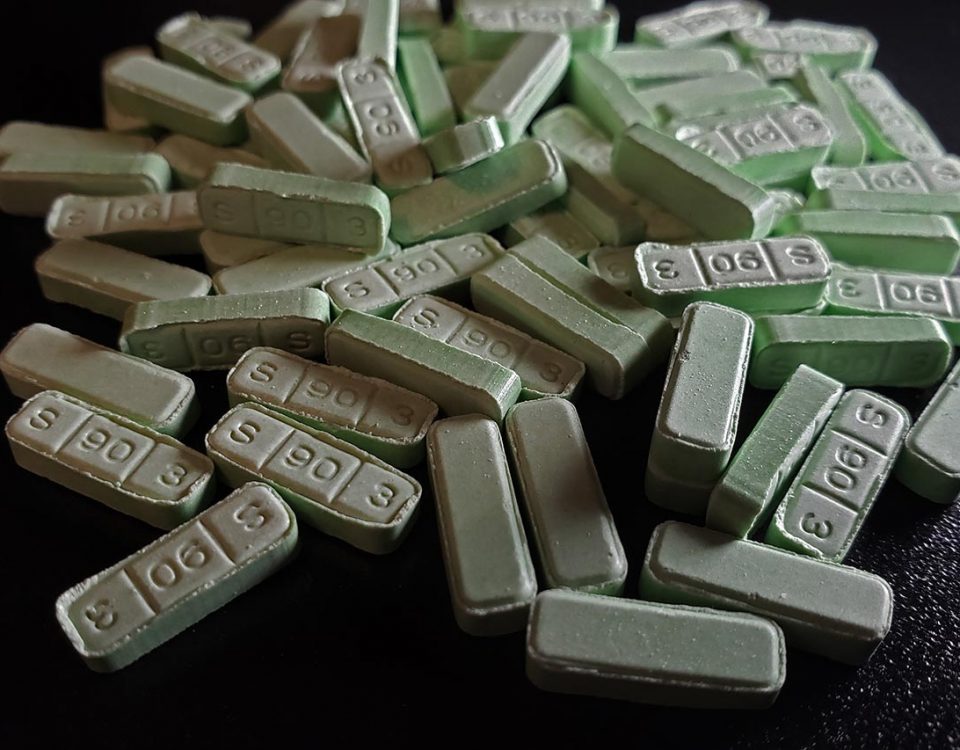Tramadol is a synthetic opioid that’s prescribed to treat moderate to severe pain. Other common brand names for tramadol include Ultram and ConZip. Tramadol works by binding to opioid receptors in the brain and body, blocking pain signaling and producing relief from symptoms. However, like other opioids, tramadol does cause withdrawal symptoms in people who use it for long periods or abuse it. Today we’re sharing common tramadol withdrawal symptoms and safe treatment options.
Drug dependence can occur when a person takes a drug exactly as prescribed, although it occurs more quickly when the drug is abused. Tramadol dependence occurs when the brain and body have become accustomed to the effects of the drug and no longer function the same way without it.
Tolerance also occurs in people who use or abuse opioids for long periods. When a dose of tramadol no longer produces the same effects as before, the person may have become physically tolerant to that particular dose and may require more of the drug to experience the same effects.
Tolerance usually causes the individual to use more of the drug, leading to dependence and sometimes to addiction. Similar to traditional opioids like hydrocodone and oxycodone, tramadol produces sensation of pleasure to create a high when taken in larger doses than prescribed.
In addition to this, tramadol also blocks neurotransmitters like dopamine and serotonin from being reabsorbed. When taken in high doses, tramadol produces a flood of these feel-good chemicals to create a euphoric high.
Tramadol withdrawal can be highly unpleasant and even painful. Common tramadol withdrawal symptoms include:
Your body, during withdrawal, is attempting to readjust to functioning without tramadol in your system. This can be a difficult process that should not be done without medical assistance.
Tramadol has a half-life of 7 hours, which is short compared to other drugs. Immediate-release formulas of this drug are quickly absorbed into the bloodstream, with peak effects occurring within 1 to 4 hours of use.
The effects of extended-release tramadol may last a little longer and peak at about 4 to 6 hours after use. Generally, however, tramadol withdrawal begins about 12 hours after the last dose and can last up to 14 days.
Keep in mind that in addition to the formula of tramadol you take, other factors like age, weight, duration of use, and range of doses taken can also affect how long tramadol withdrawal lasts and the severity of symptoms. Those who abuse the drug or take it for longer periods are more likely to experience more intense and uncomfortable withdrawals.
Below is a timeline of tramadol withdrawal symptoms to better display when symptoms occur and how long they last.
Days 1 – 3: Early tramadol withdrawals include feelings of pins and needles in the skin, sweating, anxiety, nausea, palpitations, insomnia, and drug cravings.
Days 4 – 7: Drug cravings are prominent during this stage of tramadol withdrawal, as well as insomnia, disorientation, confusion, and mood swings.
Days 8 – 14: After about a week, symptoms usually begin to dissipate. However, depression, anxiety, and irrational thoughts may persist.
Tramadol withdrawal symptoms relief is possible with the right kind of help. Do not attempt to detox from tramadol at home or without medical assistance.
Our Massachusetts drug rehab refers patients to medically monitored detox services at our partner facilities, where they can safely be weaned off of drugs or alcohol. Detox administered under the care of medical professionals is the safest way to detox from tramadol.
Following detox, those interested in continuing their recovery and quitting tramadol addiction can come to our Boston rehab to receive opioid addiction treatment. During treatment, patients will work with our counselors in individual and group settings to learn more about their addictions, develop relationships in the recovery community, and learn relapse prevention skills that promote a sober lifestyle.
For more information about our Massachusetts drug and alcohol treatment and how to get started on your recovery, call Banyan Treatment Centers today at 888-280-4763.
Related Reading:
Can You Take Tramadol and Hydrocodone Together?
Effects of Taking Tramadol & Ativan
Can You Take Tramadol with Gabapentin?
Side Effects of Tramadol Withdrawal
Drug dependence can occur when a person takes a drug exactly as prescribed, although it occurs more quickly when the drug is abused. Tramadol dependence occurs when the brain and body have become accustomed to the effects of the drug and no longer function the same way without it.
Tolerance also occurs in people who use or abuse opioids for long periods. When a dose of tramadol no longer produces the same effects as before, the person may have become physically tolerant to that particular dose and may require more of the drug to experience the same effects.
Tolerance usually causes the individual to use more of the drug, leading to dependence and sometimes to addiction. Similar to traditional opioids like hydrocodone and oxycodone, tramadol produces sensation of pleasure to create a high when taken in larger doses than prescribed.
In addition to this, tramadol also blocks neurotransmitters like dopamine and serotonin from being reabsorbed. When taken in high doses, tramadol produces a flood of these feel-good chemicals to create a euphoric high.
Tramadol withdrawal can be highly unpleasant and even painful. Common tramadol withdrawal symptoms include:
- Runny nose
- Sweating
- Tearing up
- Frequent yawning
- Muscle and body aches
- Trouble sleeping and/or insomnia
- Anxiety
- Restlessness
- Agitation
- Rapid heart rate
- Hypertension
- Rapid breathing
- Chills
- Goosebumps on the skin
- Loss of appetite
- Pupil dilation
- Nightmares
- Mood swings
- Irritability
- Depersonalization (feeling detached from your body)
- Depression
- Cravings for tramadol
- Difficulties concentrating or thinking clearly
- Nausea and/or vomiting
- Diarrhea
- Stomach pain and cramping
Your body, during withdrawal, is attempting to readjust to functioning without tramadol in your system. This can be a difficult process that should not be done without medical assistance.
How Long Does Tramadol Withdrawal Last?
Tramadol has a half-life of 7 hours, which is short compared to other drugs. Immediate-release formulas of this drug are quickly absorbed into the bloodstream, with peak effects occurring within 1 to 4 hours of use.
The effects of extended-release tramadol may last a little longer and peak at about 4 to 6 hours after use. Generally, however, tramadol withdrawal begins about 12 hours after the last dose and can last up to 14 days.
Keep in mind that in addition to the formula of tramadol you take, other factors like age, weight, duration of use, and range of doses taken can also affect how long tramadol withdrawal lasts and the severity of symptoms. Those who abuse the drug or take it for longer periods are more likely to experience more intense and uncomfortable withdrawals.
Tramadol Withdrawal Timeline
Below is a timeline of tramadol withdrawal symptoms to better display when symptoms occur and how long they last.
Days 1 – 3: Early tramadol withdrawals include feelings of pins and needles in the skin, sweating, anxiety, nausea, palpitations, insomnia, and drug cravings.
Days 4 – 7: Drug cravings are prominent during this stage of tramadol withdrawal, as well as insomnia, disorientation, confusion, and mood swings.
Days 8 – 14: After about a week, symptoms usually begin to dissipate. However, depression, anxiety, and irrational thoughts may persist.
Treatment of Tramadol Withdrawal Symptoms
Tramadol withdrawal symptoms relief is possible with the right kind of help. Do not attempt to detox from tramadol at home or without medical assistance.
Our Massachusetts drug rehab refers patients to medically monitored detox services at our partner facilities, where they can safely be weaned off of drugs or alcohol. Detox administered under the care of medical professionals is the safest way to detox from tramadol.
Following detox, those interested in continuing their recovery and quitting tramadol addiction can come to our Boston rehab to receive opioid addiction treatment. During treatment, patients will work with our counselors in individual and group settings to learn more about their addictions, develop relationships in the recovery community, and learn relapse prevention skills that promote a sober lifestyle.
For more information about our Massachusetts drug and alcohol treatment and how to get started on your recovery, call Banyan Treatment Centers today at 888-280-4763.
Related Reading:
Can You Take Tramadol and Hydrocodone Together?
Effects of Taking Tramadol & Ativan
Can You Take Tramadol with Gabapentin?









